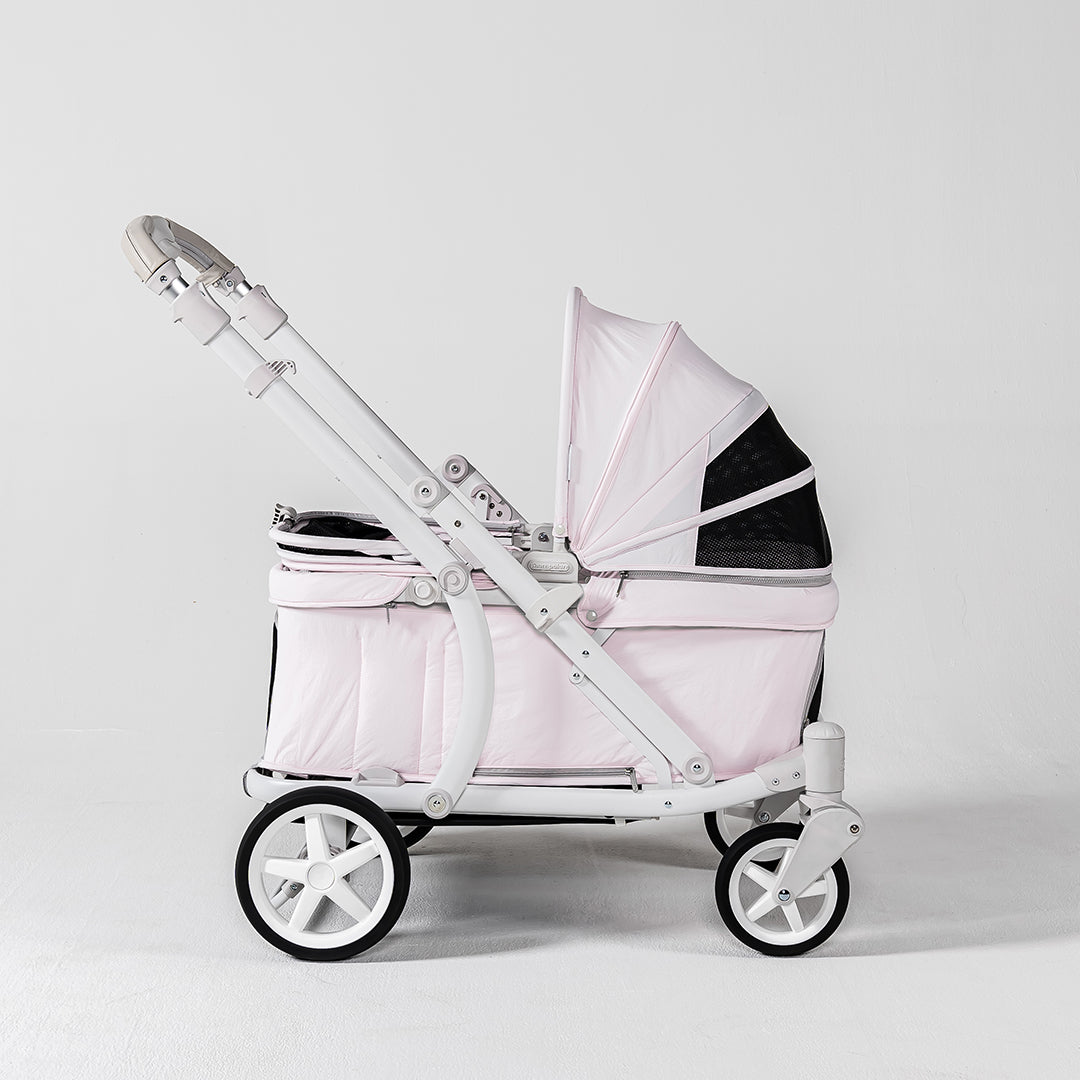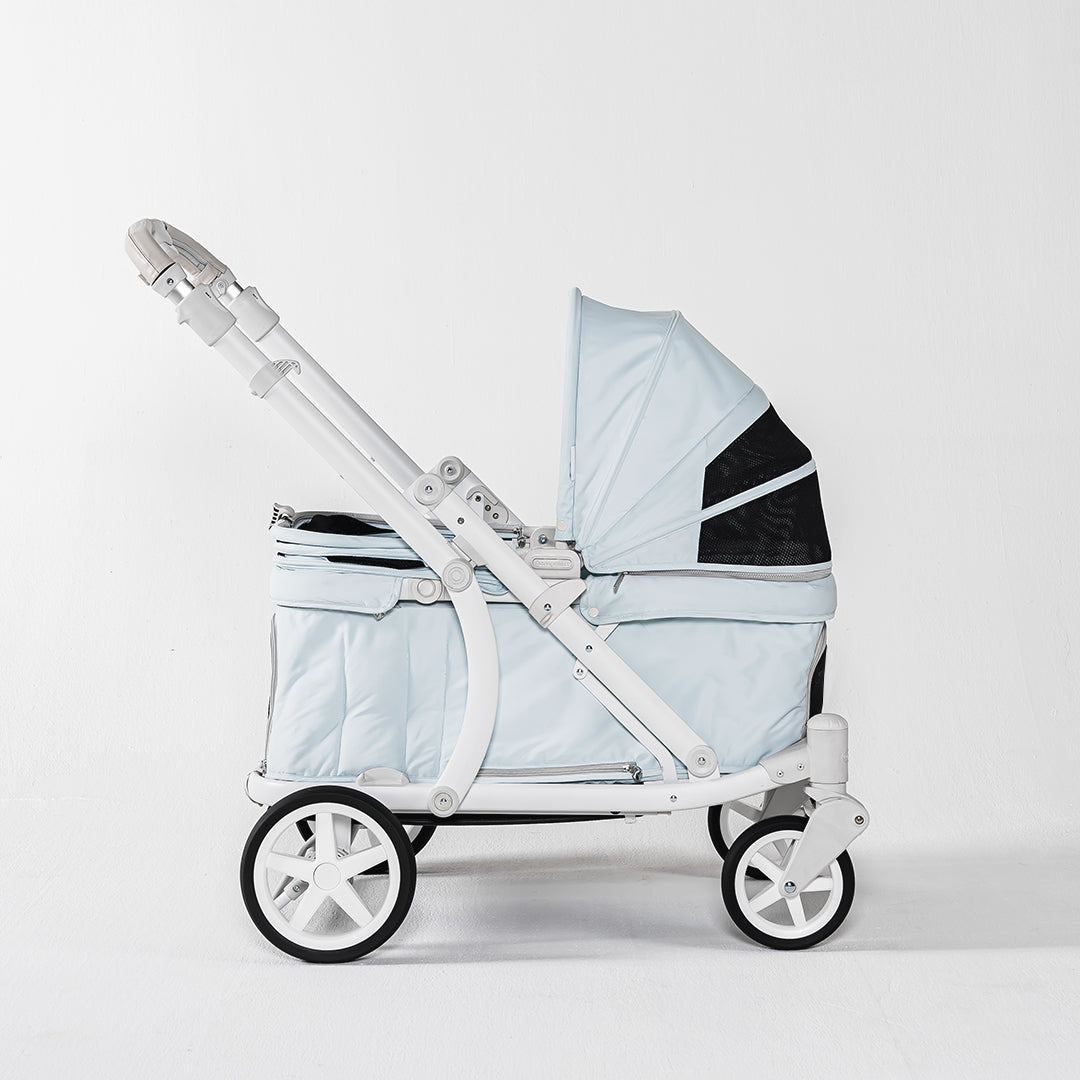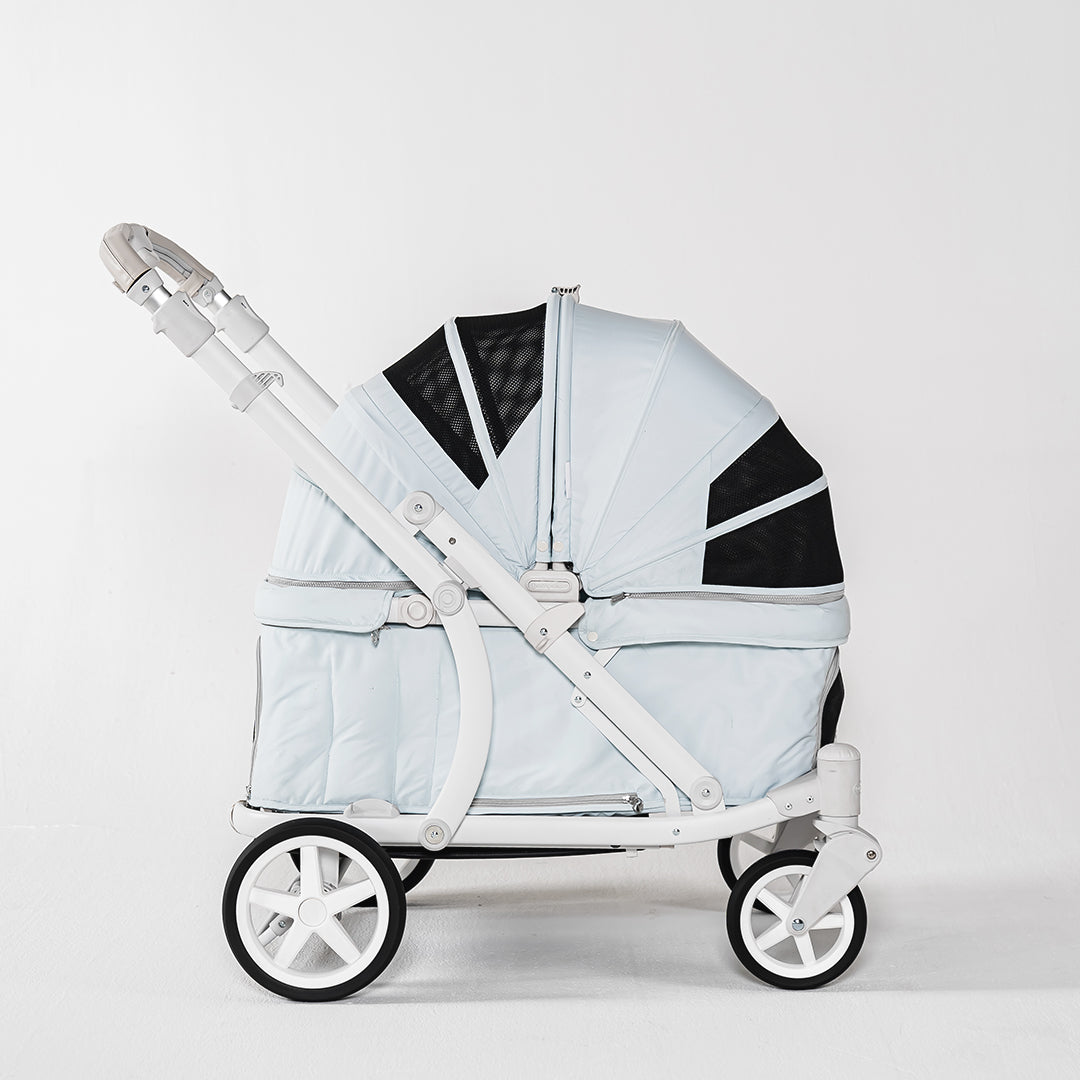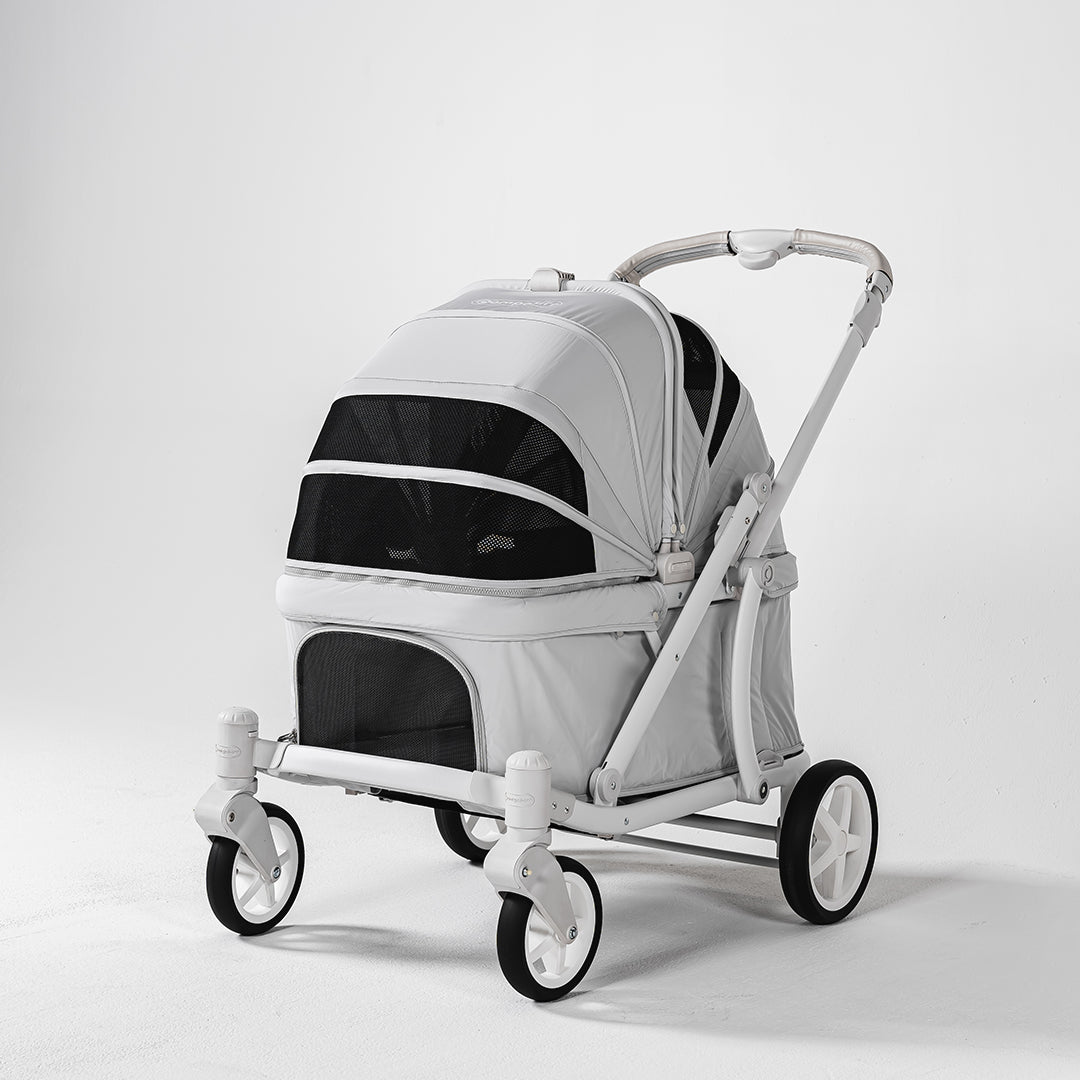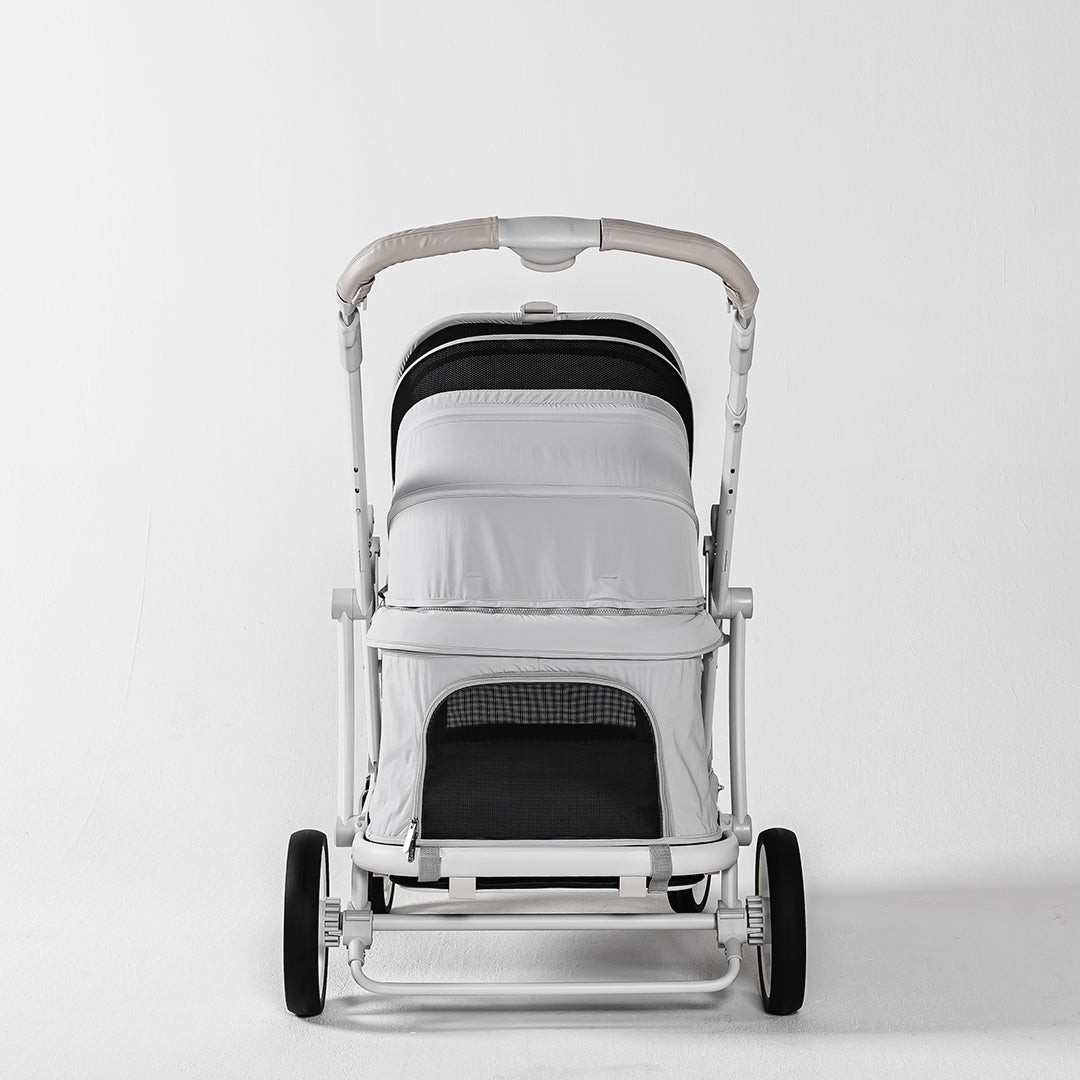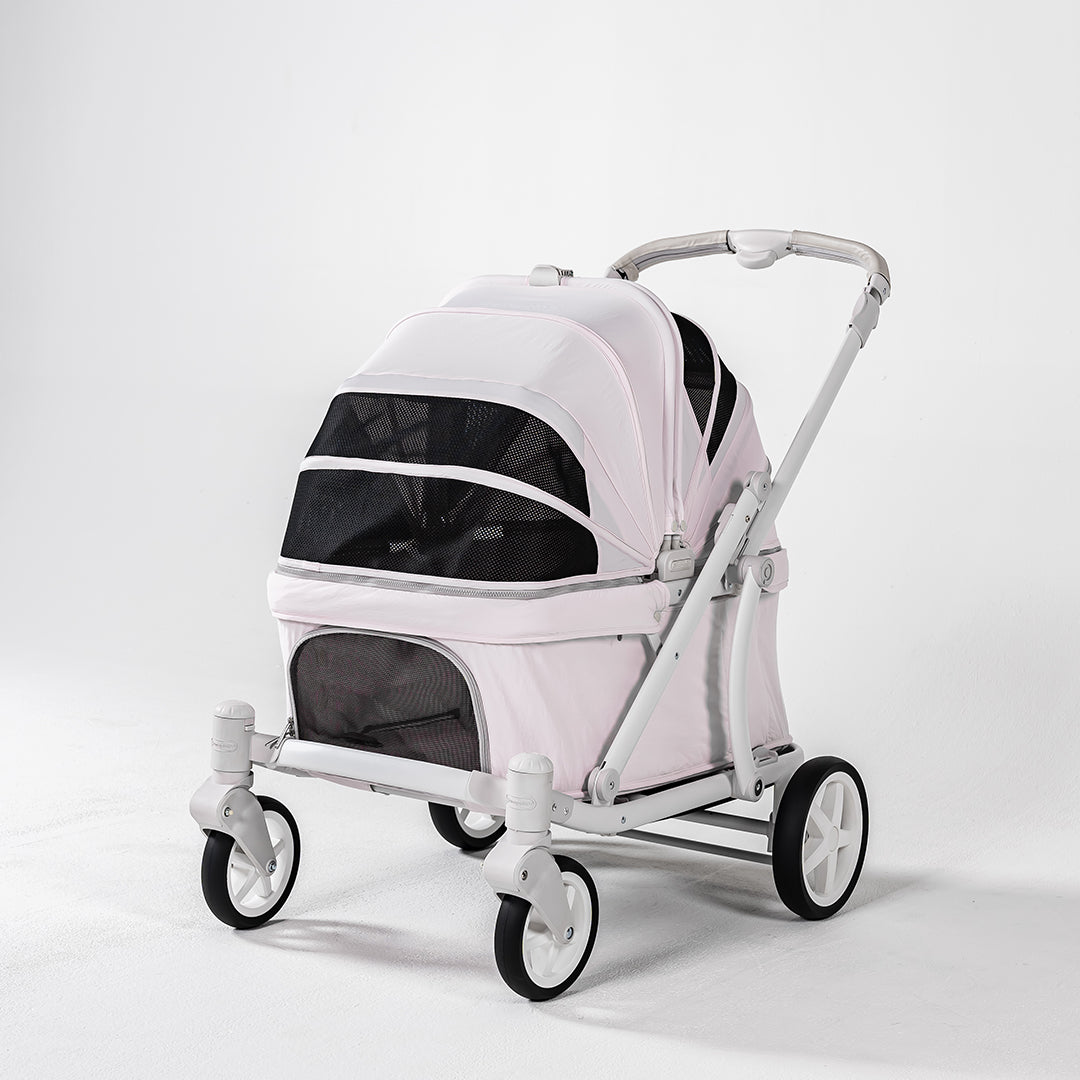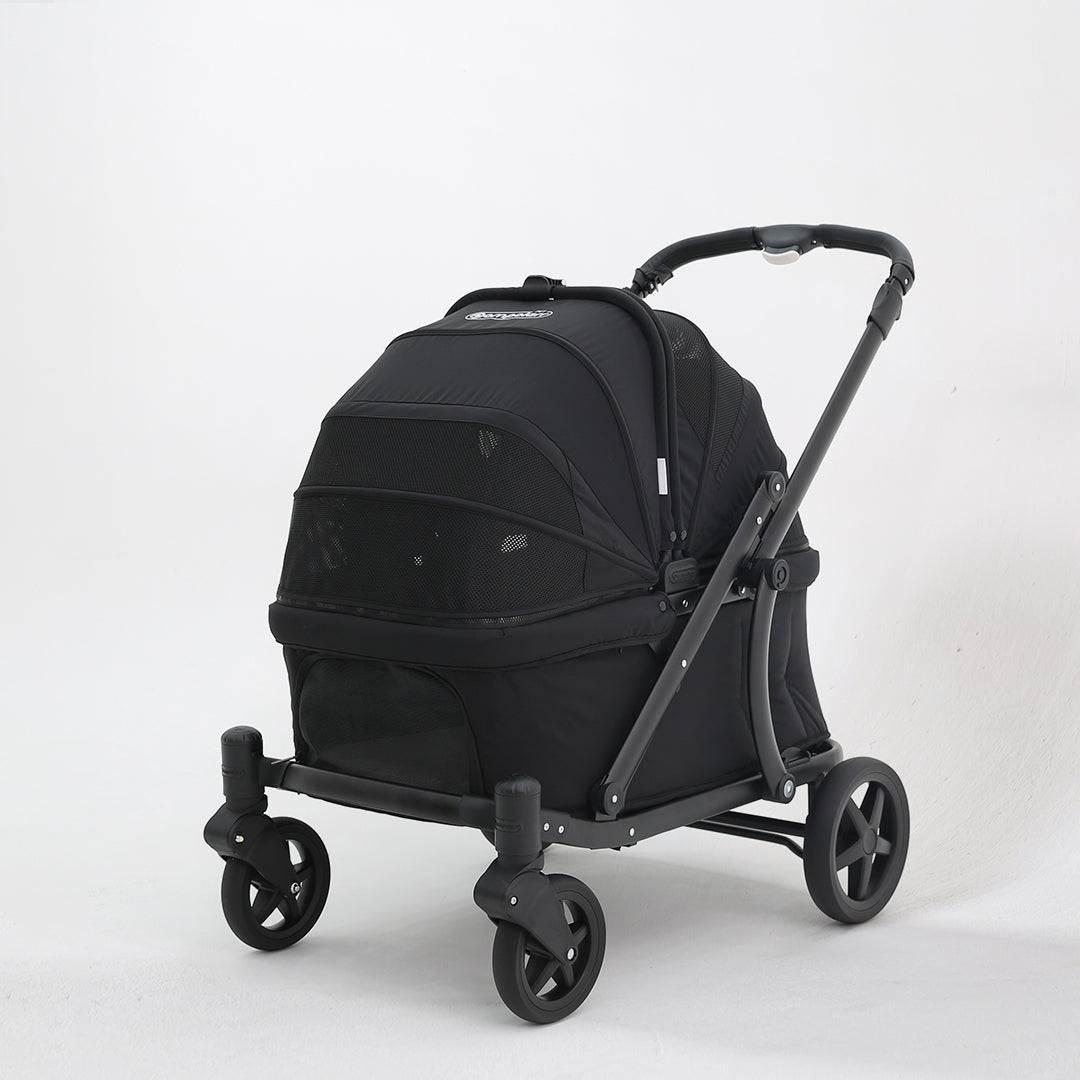Bringing home a new pet stroller can be an exciting time for pet owners, but for our furry friends, it might be a bit overwhelming. Just like introducing a pet to a new home, helping them get comfortable with a stroller requires patience and understanding. Here’s our comprehensive guide to stroller training, ensuring that your pet not only gets used to their new ride but comes to love it!
Understanding Pet Anxieties
Before diving into training, it’s crucial to understand that pets, much like humans, can feel anxious about unfamiliar situations. The confines of a pet stroller can be daunting due to its enclosure or the sound it makes while moving. Recognising signs of anxiety in your pet can help you tailor the training process to their comfort level.
Step-by-Step Guide to Stroller Training
Step 1: Introduce the Stroller in a Familiar Environment
Start by introducing the stroller to your pet in an environment they feel safe, such as your living room. Allow them to inspect and sniff it at their own pace. You can place their favourite blanket inside to make it more inviting.
Step 2: Use Positive Reinforcement
Encourage your pet to explore the stroller by placing treats and their favourite toys inside. Praise them warmly whenever they show curiosity or calmness around the stroller. This positive association goes a long way in making them feel comfortable.
Step 3: Create a Comfortable Space
Ensure the stroller is comfortable for your pet. If your pet is used to a crate, replicate that environment by adding familiar cushions or toys. The goal is to make the stroller feel like a safe, mobile den.
Step 4: Start with Short, Stationary Sessions
Before hitting the pavement, have your pet sit in the stroller while it’s stationary. You can use this time to play with them or give them treats. Gradually increase the time they spend in the stroller.
Step 5: Begin with Short Walks
Once they seem comfortable, start with short, slow walks around your home or in a quiet area. Keep the initial outings short, and gradually increase the duration as they become more comfortable.
Step 6: Monitor and Adjust
Pay attention to how your pet reacts during stroller walks. If they seem nervous, decrease the duration and go back to shorter or stationary sessions. Always proceed at a pace that your pet is comfortable with.
Why Stroller Training is Worth the Effort
The benefits of getting your pet used to a stroller are manifold, especially for pets with mobility issues, seniors, or those recovering from surgery, as well as smaller breeds with more complex and specific needs. Strollers allow them to enjoy the outdoors and socialise without physical strain or fatigue. Moreover, for urban pet owners, strollers can provide a safe haven from the hustle and bustle of city life, ensuring your pet can enjoy outings without stress.
Stroller training might require some patience, but it’s a rewarding process that can significantly enhance your pet’s quality of life. Remember, every pet is unique, and their training needs might differ. Always approach training sessions with kindness and patience, and soon your pet will be enjoying their new set of wheels!











































